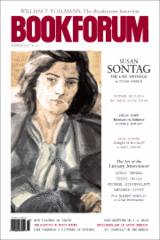
If a man in a hurry, carrying flowers, buys a ticket on a slow-moving streetcar bound for the train station, and the woman he’s meeting is on a fast-moving train that will arrive a few minutes late, who will get to the station first? This unanswerable word problem serves as the premise of Dumitru Tsepeneag’s Vain Art of the Fugue. Yet the aporia of this proposition is further complicated by the repeated references to Zeno’s Paradox—the notion that to get from point A to point Z, one must pass through an infinite number of halfway points. As Tsepeneag’s ticket collector says, “Any distance, however short, can always be divided further.” According to this logic, any movement is in vain. Still, “you never know what might happen on a journey”: A fish might soar through the sky, or someone might eat tickets as if they were candies. The first of Tsepeneag’s novels available in English, in a deft translation by Patrick Camiller, Vain Art of the Fugue reads as if it grew out of fellow Romanian Tristan Tzara’s Dadaist juxtapositions and Alain Robbe-Grillet’s nouveau roman mysteries (which Tsepeneag has translated), though it has a whimsical beauty all its own.
Although Tsepeneag was exiled to France by Ceauşescu in 1975, this novel, originally published in 1991, is not primarily political. The quixotic travels of the narrator almost parody the desperate final days of the executed Ceauşescu (the story ends with, among other things, the slaughtering of a pig), and the description of ordinary locomotive travel becomes a metaphor for life under Communist rule, riddled with paranoia and futility. However, Vain Art of the Fugue is more an exercise in the conflation of repetition and amnesia. As the title indicates, it is structured like a musical fugue—an interweaving of contrapuntal themes with permutations of events, characters, and objects—resulting in a narrative that contracts and expands like an accordion. The effect is that of a burlesque Kafka, at once comical and ominous.
Romanian Communism had officially ended by 1990, and Tsepeneag returned to his native country after Ceauşescu’s 1989 demise. Yet rather than tease out the rupture of exile, Vain Art of the Fugue examines the deeper brutality of speeding toward an ever-delayed stopping point. Tsepeneag cofounded an avant-garde movement of “oneiric” writing that countered government-ordained socialist realism, but his novel is finally as productive of nightmares as of dreams, mirroring a psychological fugue state: “He was naked, running down a hallway decorated with red tulips and filled with rats that swarmed between his feet.” Thus is the magical world of Tsepeneag’s eerily seductive little novel, the surreal absurdity of which begins to seem like the only possible response to the unanswerable and paradoxical.

